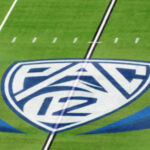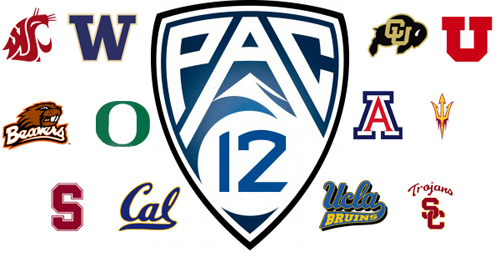Send questions to pac12hotline@bayareanewsgroup.com or hit me on Twitter: @WilnerHotline. Due to volume — and in some cases, the need for research — not all questions will be answered the week of submission. Thanks for your understanding.
Some questions have been edited for clarity and brevity.
Can we get an updated definition of the term ‘blue blood’? UCLA’s 11 national titles are impressive, but the Bruins have won just one in nearly 50 years. Duke and North Carolina have five each in that same period. What gives? What’s the statute of limitations? Should Final Fours be the new gold standard? — @boscpenn83
Absolutely not. The Final Four is a major accomplishment for any program, but for blue-blood status, national championships are required.
More specifically:
— A school needs multiple titles over multiple decades with multiple head coaches to be considered a true blue blood.
— Also, at least one of those championships must have come in the modern era of the tournament. North Carolina State won the NCAA title in ’74 and ’83, but we don’t consider the Wolfpack a blue blood of the sport.
— Lastly, sustained relevance is necessary. I cannot offer a minimum number of conference titles or NCAA appearances that would serve as the threshold, but simply put: You can’t stink for decades on end.
UCLA absolutely qualifies with NCAA championships in three different decades (60s, 70s and 90s), not to mention the 11 total banners hanging in Pauley Pavilion.
Kentucky, Duke, North Carolina and Kansas are other clear blue bloods.
What about Arizona?
Within the Pac-12, the Wildcats qualify. But I wouldn’t categorize Arizona as a blue blood nationally — not like the schools mentioned above.
Arizona has been good or great for four decades and should be on the next tier, along with Syracuse.
The same general definition applies in football, where the Pac-12 has just one true blue blood.
USC owns AP national titles in three decades (60s, 70s and 00s) and, by any measure, stands on the short list of the greatest programs in history, alongside Ohio State, Alabama, Notre Dame and Oklahoma.
Oregon football is somewhat comparable to Arizona basketball — a blue blood within the conference but not nationally. (The Ducks don’t have a national title but were the runners-up in 2010 and 2014.)
Because our criteria require excellence over multiple decades, Washington is closer to blue-blood status (in football) than Oregon.
The Huskies have a national title in one of the major polls (Coaches, in 1991), along with more conference titles, more Rose Bowl appearances and more Rose Bowl wins than the Ducks.
Oregon has been the better program over the past 15 years and should be considered the bigger brand at the moment — not even the purplest-blooded Husky fan would deny that.
But blue bloods are made over the sweep of decades, with a national title as the first requirement.
Dan Lanning’s recruiting has been quite underwhelming, yet he was hired as a big-time recruiter who could get big-time names. What do you think is holding him back at Oregon? — @wetbeefs
Let’s ease off the skepticism, shall we?
Lanning was hired in early December and did quality work salvaging the Ducks’ recruiting cycle: They signed a slew of four-star prospects in February and finished with the No. 24 class in the 247Sports composite.
Also, players acquired through the transfer portal must be taken into account, and Oregon’s transfer haul ranks No. 20 nationally. (We suspect the Ducks will add a few more players after spring practice.)
Generally speaking, let’s give Lanning a full recruiting cycle before drawing any conclusions. The timing of the early signing window (mid-December) creates a real dilemma for teams that change coaches.
If you’re still unimpressed come the close of the 2022-23 signing period, we’ll re-examine.
Did Larry Scott repay his Pac-12 loan? — @akovacs197
For those unaware, the former commissioner received a $1.9 million “relocation” loan from the conference — presumably at the start of his tenure, in 2009.
It had not been repaid by the close of FY2020, according to the most-recent Pac-12 tax filings. My understanding is that it’s not due for a few more years.
Last week, I asked about Nick Rolovich. This week, where’s Jimmy Lake now? — @A_C_Taylor
As far as I know, Lake is living in the Seattle area, collecting his severance pay from UW and pondering his next move.
He’s immensely respected as a recruiter and developer of defensive backs and will have myriad options if/when he does return to the profession.
Hopefully, he wants back in. College football in the Pac-12 — and on the West Coast generally — is a better place with Lake involved.
Will he have another head coaching opportunity? Probably, but it could be many years away.
He just got to Arizona, but do you think Tommy Lloyd would strongly consider going back to Gonzaga whenever Mark Few decides to retire? Keeping Arizona at an elite level would be easier than keeping Gonzaga elite. — @mlucey13
I do, but please understand the context: The Hotline believes all head coaches possess a strong desire to eventually return to their roots until we see evidence that they don’t.
Lloyd grew up in Washington (Kelso), attended college in the state and spent 20 years next to Few on the Gonzaga bench.
Until he publicly denies interest in replacing Few — or turns down the job — we will presume a substantial level of interest.
That’s hardly a knock on Arizona. Home is home and, given what I’ve observed over the years, Pacific Northwest guys are Pacific Northwest guys.
We don’t envision Lloyd leaving Arizona for any other college job, and the 59-year-old Few could coach another six or eight years.
This might be a moot point for a long time.
Does Brigham Young win the Pac-12 North next season? — @Jeremiah_Hale
It will be difficult for the Cougars to recreate their dominance for one reason: Instead of playing five Pac-12 opponents, they only face two: Oregon and Stanford.
Now, if they win both and either the Ducks or Cardinal finishes first in the North, we might consider anointing BYU the de facto division champs.
But it would not be nearly as obvious as last season, when the Cougars were 4-0 against the South and beat the top two teams in the division (Utah and ASU).
Of course, the Cougars do face Dixie State and Utah State next season, so they could lay credible claim to being the best team in Utah not named Utah.
What are the top five intra-conference Pac-12 football games Jon Wilner has ever attended? — @eriggs
The Hotline typically avoids boring readers with personal experiences, but this seems like a fun exercise.
After careful consideration, I would offer the following list of three games as the best of the best that I’ve had the pleasure of witnessing:
— Stanford 56, USC 48 (3OT) in 2011: The Cardinal was 7-0 and ranked fourth; the Trojans were 6-1 and ranked 20th. Andrew Luck vs. Matt Barkley, almost 1,000 yards of offense, a packed Coliseum and 60 points scored in the fourth quarter and overtimes.
— UCLA 48, USC 41 (2OT) in 1996: The Bruins came from 17 down late to force overtime.
— Stanford 49, Oregon 42 in 2001: The Cardinal scored three touchdowns in the fourth quarter to hand the Ducks a stunning loss that would keep them from playing for the BCS title.
Appreciate the question.
Support the Hotline: Receive three months of unlimited access for just 99 cents. Yep, that’s 99 cents for 90 days, with the option to cancel anytime. Details are here, and thanks for your support.
*** Send suggestions, comments and tips (confidentiality guaranteed) to pac12hotline@bayareanewsgroup.com or call 408-920-5716
*** Follow me on Twitter: @WilnerHotline
*** Pac-12 Hotline is not endorsed or sponsored by the Pac-12 Conference, and the views expressed herein do not necessarily reflect the views of the Conference.
Related posts:

(AP Photo/Rick Bowmer)
Wilner Mailbag – Utah’s CFP chances, Ranking Pac-12 President’s indifference on football, more
(AP Photo/Ralph Freso, File)
Wilner Hotline – Pac-12 survival guide: Could the lifeboat be hidden in plain sight? Pac-12 survival: UC Board of Regents plunges into the details of UCLA’s pending departure for the Big Ten
Pac-12 survival: UC Board of Regents plunges into the details of UCLA’s pending departure for the Big Ten
 Wilner Hotline: Pac-12 rewind: Perfection in L.A., WSU bounces back, Phillips shines, Stanford and Cal stumble and loads more from Week Five
Wilner Hotline: Pac-12 rewind: Perfection in L.A., WSU bounces back, Phillips shines, Stanford and Cal stumble and loads more from Week Five

